Expert Q&A: Sue Natali
By Amy Nelson
How do we know for certain where permafrost exists?
Most current permafrost distribution maps are based on models that are informed by ground observations. Since climate is the main factor that controls permafrost distribution, and permafrost is a thermal state, we can combine knowledge of climate with ground thermal dynamics to gain an understanding of where permafrost is. It is a challenge to get more fine-scale maps of permafrost condition because there are also local landscape and ecological conditions that control permafrost. In the Northern Hemisphere, for example, south-facing slopes are quite a bit warmer than north-facing slopes. Other local conditions that control permafrost include the presence of forests, the thickness of the moss layer and the amount of organic matter in the soil. [Moss and soil organic matter help protect permafrost.]
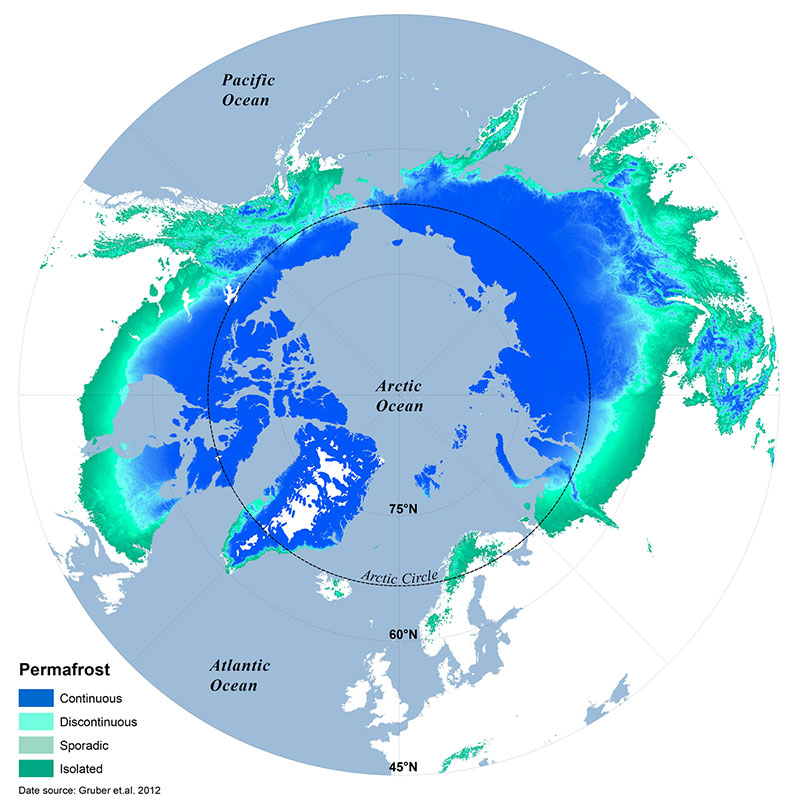
In the field, we know permafrost is there because we have tools to measure it. We can stick a metal probe in the ground, and when it can’t go any farther, we know we have hit permafrost. Another tool that can be used in the field is ground-penetrating radar, an instrument you drag along the ground that can detect the frozen state of the soil.
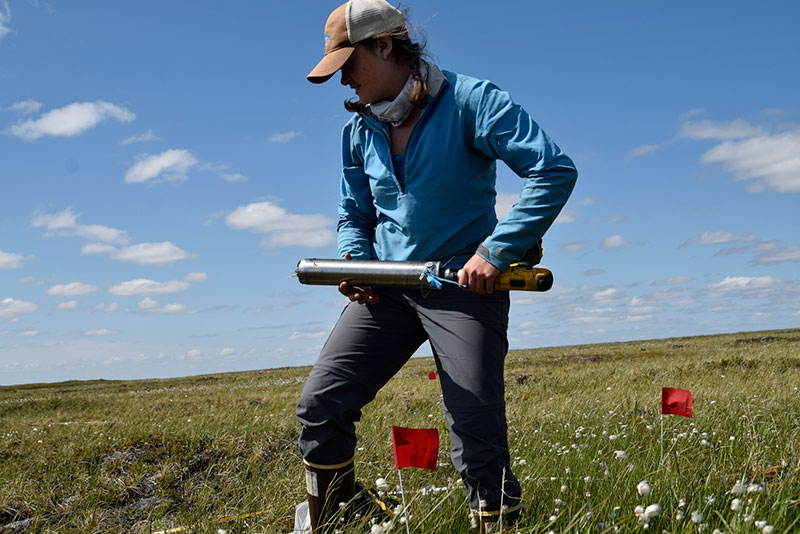
There are also indirect ways of determining where permafrost is. We know some of the features that, when combined with air temperatures, impact ground thermal dynamics. Many of those features can be detected remotely. While we can’t use optical remote sensing to see permafrost, we can see some of the features we know are related to permafrost. More recently, scientists in the remote sensing community are developing methods to detect permafrost remotely using radar remote sensing. This is in its early stages of development, but that will help a lot.

Most of us have never been to the remote places where you conduct your research in North America and Siberia. Can you take us there for a moment? What does the landscape look and feel like? What kinds of communities do you come across?
When most people think of the northern permafrost region, they think of tundra, so I’ll start with that. When you see a picture of tundra, it looks like a flat, homogenous place. But many tundra areas are a mosaic of terrestrial and aquatic landscapes, and there is actually a lot of heterogeneity at multiple scales. Some tundra regions are on very rocky soils, but in many places, tundra feels spongy because there is a lot of moss and lichen. There are a lot of different moss species–the genus Sphagnum is quite common. Vegetation can range from prostrate shrubs less than 10 cm in height to shrubs that are a meter high. Most of the tundra ecosystems in which I work are lower shrub communities where the vegetation is below my knee. Within the tundra, you have areas that are quite dry, but also areas that are quite wet, so you have bogs and fens. Tundra is quite diverse. When you fly over it, you see all these different levels of patchiness across the landscape. Then, as you stand on top of it, you see that same patchiness at another scale. In terms of wildlife, caribou, musk ox, grizzly bear, voles, and moose are quite common in the tundra areas where I work.
A large part of the permafrost region is boreal forest. In many areas of North America, including across Alaska, a lot of the forested areas are dominated by black spruce and white spruce. In Eurasia, including where I work in Siberia, it’s deciduous, needle-leaf forests dominated by larch. In fact, huge expanses of permafrost are covered by that single tree species. I’m always amazed that in the understory of the forested areas, you’ll often see many of the exact same species that you see in the tundra. This is true in Alaska, Siberia, and many other areas of the Arctic.
What are some of those species?
I see Labrador tea (Rhododendrom subarcticum), blueberry (Vaccinium uliginosum), and some cranberry and willow species everywhere. There is also cotton grass (Eriophorum vaginatum), a sedge that forms a tussock. Anyone who has walked on tundra has likely tripped on a cotton grass tussock!
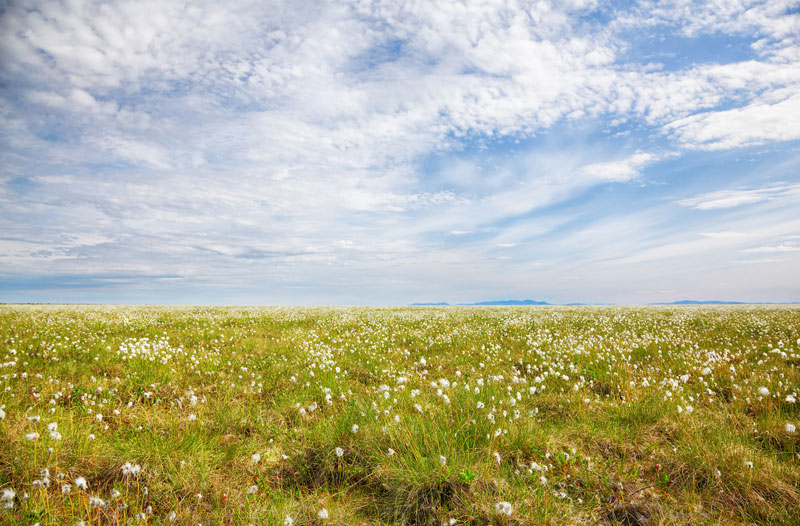
What are some of the keystone species in both the tundra and boreal forest ecosystems?
I’m more of a plant person than a wildlife person, so my perspective may be different. In Siberia, I’d have to say the keystone species is the larch tree because it is pretty much the only tree species. If you remove it, you’d have a totally different ecosystem. In tundra, some of the lichens are very important for wildlife, and the mosses play a critical role in protecting permafrost, so if they were removed the system would be a very different place.

How vulnerable is permafrost? How much of it is close to the thawing point?
It depends on where you are. In terms of increases in temperature of the permafrost, the rate of increase has been higher in more northern areas where the permafrost temperatures are colder. But the permafrost in the more southern parts of the range are more vulnerable because they are closer to the point of thaw. In an area where I work on the Yukon-Kuskokwim Delta in southwest Alaska, the permafrost temperature one meter down is -0.3 C. That whole region is projected to thaw by 2050, which is now only 30 years away. There are many areas along the southern range like that. Projections show that 40-70% of surface permafrost, the top meter, will be lost by 2100.
Regardless of any policy decisions, we have already committed to some level of permafrost loss because temperatures in the Arctic have been warming so much faster than the rest of the planet. They have already exceeded the 2°C increase.
As permafrost thaws and the organic material in it decomposes, carbon dioxide and methane are released into the atmosphere. What do we know at this point about the amount and rate of these releases?
We know that there is a lot of carbon stored in permafrost because the Arctic has been a carbon sink. [Permafrost soils in the Arctic contain ~1500 billion tons of carbon, almost twice as much as is currently in the atmosphere.] But we know from field-based studies that a number of areas have switched from being carbon sinks to carbon sources. For example, there is a site where I worked in Interior Alaska which is now a carbon source (Natali et al. 2014) There are a couple of places on the north slope of Alaska that a recent study (Euskirchen et al. 2017) has shown to be carbon sources. A recent regional analysis of Alaska (Commane et al. 2017)showed that the northern tundra regions have become a carbon source.
The cold seasons—fall, winter, and spring–are particularly important to our understanding of carbon emissions because during this period, plants are no longer taking up carbon, but microbes are still active. Yet this is the period for which we have the least information. As we learn more, and as our instrumentation and techniques advance, we are starting to see how important this time period is in contributing to emissions.
Do you think that is the most urgently needed permafrost research?
Well, I’m a little biased because I focus a lot on trying to quantify cold season emissions and understand its drivers, so we can better represent them in models. But I’m biased because it is important. It is very hard to collect accurate data at such very cold temperatures. It is hard to get the instrumentation to work when it is dark, -40°C, and you’re in remote locations where you don’t have power. There are also a lot of spatial research gaps in the Arctic, and challenges in linking measurements collected from different locations. The way our funding sources work, individual PIs get funding, so while one person may be measuring carbon pools, another may be measuring carbon flux, and another may be measuring vegetation changes. These don’t often happen in one location, which makes it a challenge to understand the feedbacks and interactions among the different components of the ecosystems.
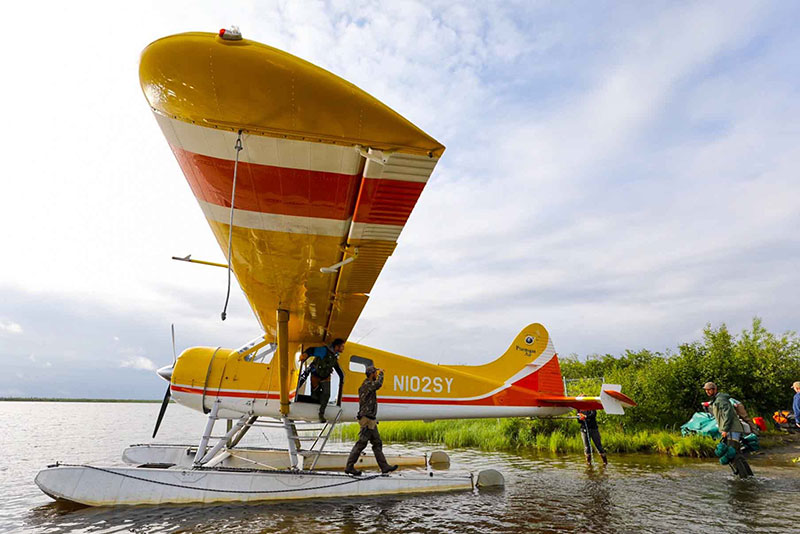
Is there a central organization that is capturing or synthesizing research related to permafrost thaw?
In terms of coordinating research, NASA has a 10-year program called ABOVE -the Arctic Boreal Vulnerability Experiment. Through this program, individual scientists are funded based on priorities that are being identified by the scientific community. The program involves field-based scientists, like myself, but also remote sensors and modelers. The U.S. Department of Energy has a 10-year program underway called NGEE Arctic (Next Generation Ecosystem Experiment),which is focused on understanding carbon feedbacks to climate in the Arctic, focusing on intensive lab, field, and remote sensing measurements at two locations in Alaska to better represent carbon cycle processes in models.
The Permafrost Carbon Network is an international community of permafrost scientists who are focused on the synthesis of existing data and incorporating these data into models that project carbon emissions from permafrost thaw and the impacts on global climate. An example of such a product is the article that came out in Nature a few years back (Climate change and the permafrost carbon feedback, Nature 520, 171–179 (09 April 2015) doi:10.1038/nature14338) for which I was a co-author. The Permafrost Carbon Network recognizes that there are a lot of gaps in the data and that we need to move forward in our understanding of permafrost. One way to do that is to bring together studies that are out there. In and of themselves, they may not provide a complete picture, but if you put them together in a synthesis study, this can help further our understanding.
What were the most important findings and recommendations to come out of that 2015 paper in Nature?
The most important piece of information to come out of that paper was a number for expected emissions from permafrost thaw that was based on a synthesis of the sources that are out there. [The paper determined that 130-160 billion tons of carbon might be released from thawing permafrost between now and 2100.] One of the reasons that it is so important is that our policy decisions are not incorporating carbon emissions from permafrost thaw. Permafrost processes are not in Earth Systems Models that informed that last Intergovernmental Panel on Climate Change report. Without a good source of a number, you are at a standstill when it comes to communicating with policy makers. Often the pace of the science and the pace of policy needs are not the same.
Two years ago, around the time of the Paris Climate Talks, you likened permafrost to a carbon emitting nation like the U.S., but then you pointed out that these emissions were not factored into climate models or emissions scenarios. Has that changed? Was thawing permafrost factored into discussions at COP 23 or into action related to the implementation of the Paris Agreement?
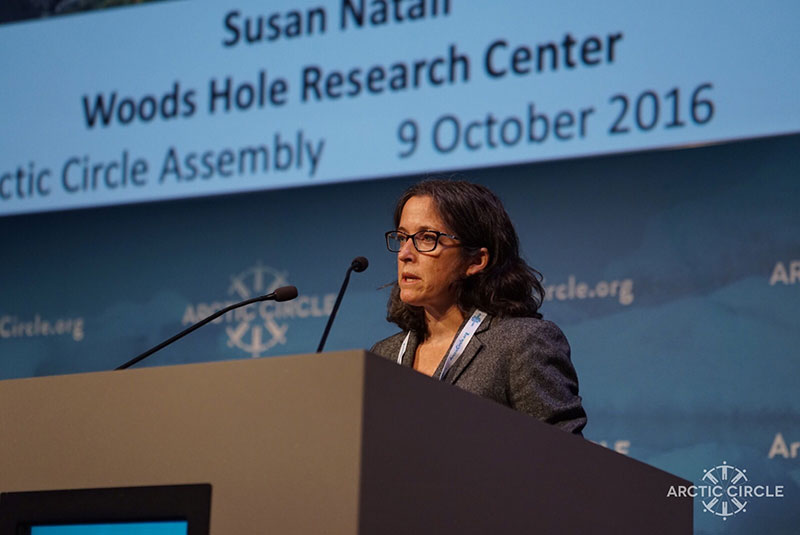
No. I participated in an event at the COP in Paris and presented information on thawing permafrost, and we just had a similar event at COP 23. But carbon emissions from thawing permafrost are still not incorporated into the budget, which is really a problem. Yes, there is a range of uncertainty around emissions from thawing permafrost, but not accounting for them is going to make the situation worse.
This summer, there was a lengthy article in the New York Times about thawing permafrost. In October, the topic was featured on a segment of CBS This Morning. Do you think there is a growing awareness of permafrost (and the fact that it is thawing) among mainstream people?
I always think there is a growing awareness and then I move out of my bubble of people and realize there are still people who have never heard of it. The news articles are great. So are the outreach efforts. After the event I did at COP in Paris, I was contacted by an environmental minister who had not known about permafrost carbon emissions. She asked me for information because she wanted to include it in an environmental report she was writing up. All of those things are positive, and hopefully the pace will pick up. The goal is to continue to communicate but also to get these carbon emissions into the accounting and into the next round of commitments made by the international community.
What impacts do you think the thawing of permafrost will have on fossil fuel extraction in the Arctic? I know there are concerns that it might encourage more excavation.
People have been building and living in communities in the Arctic for quite a while, and they have figured out how to build infrastructure on permafrost, but there are limitations and costs, particularly as it starts to thaw. I am hoping that the accounting of those limitations and costs will reduce development and exploration.
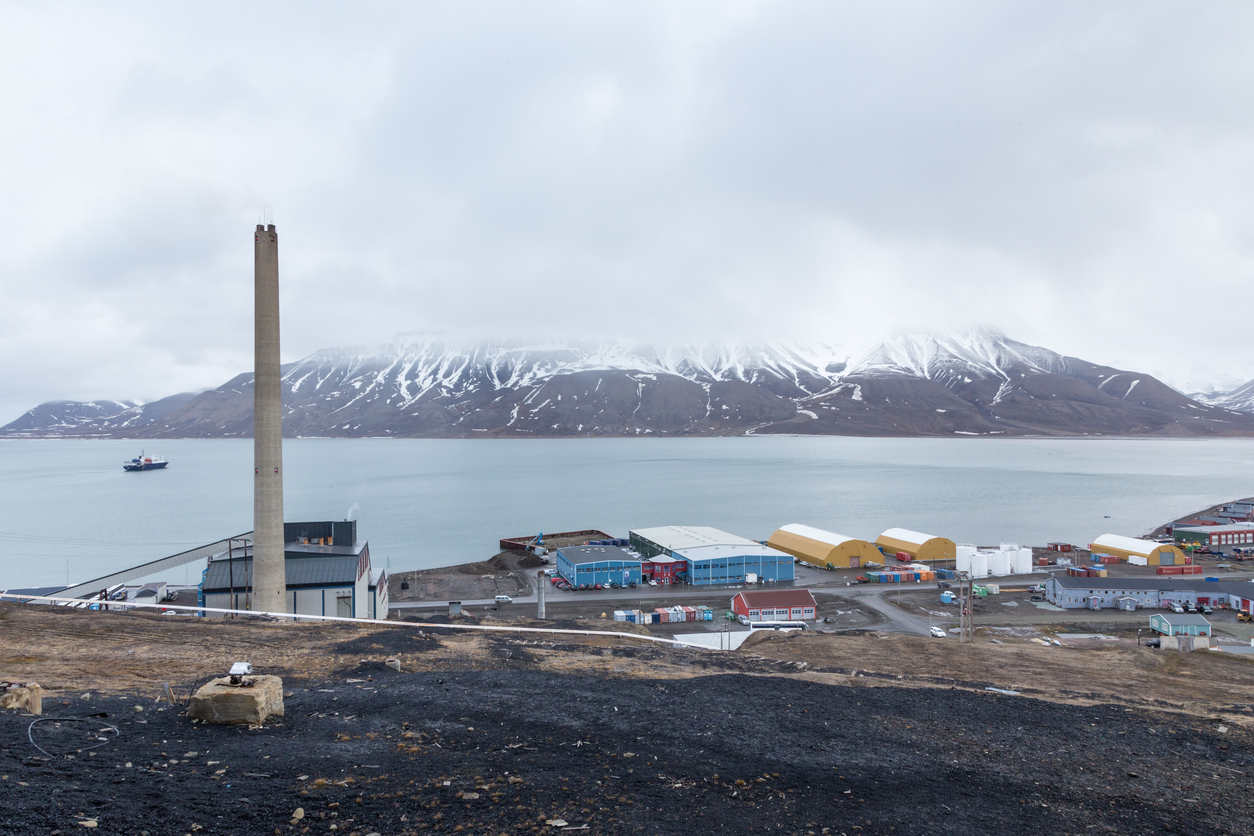
One consequence of thawing permafrost that I think most people can understand is the land collapse-and the degradation of structure and infrastructure-that occurs when ice within permafrost melts. Has land collapse already created climate refugees?
I was fortunate to have attended a workshop sponsored by the Alaska Institute for Justice, which is working with a number of Alaskan coastal communities that have been impacted by permafrost thaw and erosion. I spent a couple of days listening to community members, and I think I learned more in those two days than I have in the past several years working in the Arctic.
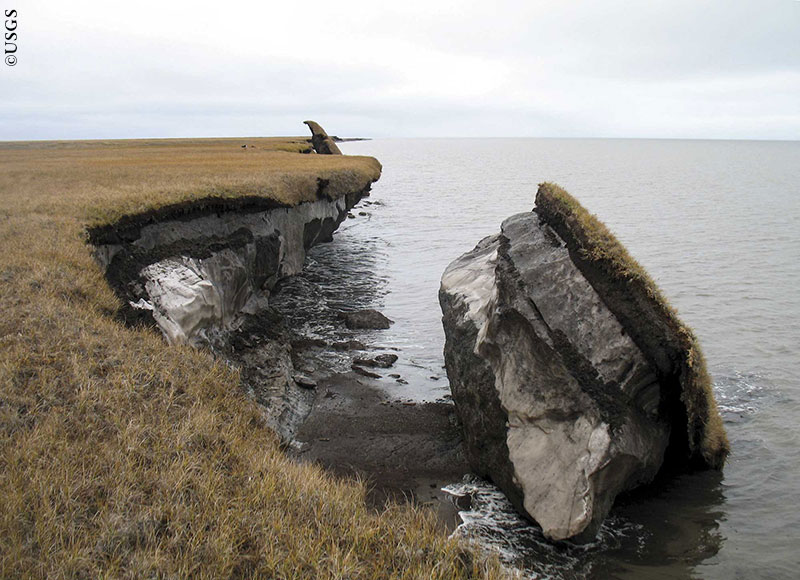
A U.S. Government Accountability Report identified more than 30 communities in Alaska that were at imminent risk of permafrost thaw, erosion, and flooding. A number of those communities, such as Shishmaref, Newtok, and Kivalina, have made the decision to move. That is not an easy decision for a community to make, but they are dealing not only with loss of roads, airports, infrastructure, but also the loss of things like hunting areas and the integrity of cemeteries. The challenges of moving are not just physical. They are cultural and political. These communities may seem remote to people in the lower 48, but this is not a local issue. This is a global human rights issue that everybody should be concerned about.
Another consequence of thawing permafrost is the potential awakening of long-dormant bacteria and viruses. How much do we know about that?
We know it is possible, and that it has happened. There was an anthrax outbreak in Siberia in 2016 that resulted in human illness and death and impacted thousands of reindeer. Thawing permafrost exposed a 75-year old infected reindeer carcass that had been buried in a shallow grave, and there was interaction between wildlife and that diseased reindeer which caused this infection. There are human bodies buried in the Arctic that are diseased, and those diseases may be viable. That said, I think the likelihood of a worldwide disease spread due to bacteria and viruses in permafrost is low. Certainly a lot lower than the risk of climate-mediated increases in transmission of vector borne diseases. I think it is also a lot less of a concern than the risk of ground collapse and climate change amplification as a result of permafrost thaw.
What do we know about the impact of thawing permafrost on these ecosystems and species within the tundra and boreal forests? How is it impacting plant and animal communities and their relationships, migrations, assemblages, and interactions?
It is hard to tease apart whether some of the changes are happening because of air temperature increase or permafrost thaw. But I do think that some of the increases in shrub abundance that are happening across the Arctic are likely the result of a combination of increases in ground temperature and permafrost thaw that are resulting in increased nutrient cycling.
I have heard locals and hunters talk about seeing moose in places where they had never seen them. I have seen forested areas that shift to a bog or fen after there is a ground collapse from permafrost thaw. In these areas, you not only lose the trees, but as the ground gets wetter, there are fewer lichen species, and lichen are particularly important forage for caribou during the winter months.
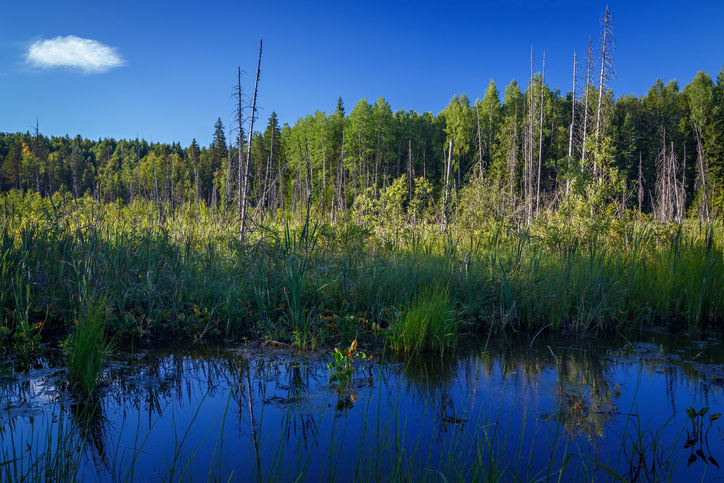
The Climate Science Special Report, which was released earlier this month, states that the Arctic is much more vulnerable to wildfire and that “a transition into a regime of fire activity unprecedented in the last 10,000 years is possible.” How does the fire vulnerability intersect with thawing permafrost?
There was also a recent paper showing that there has been an increase in lightning strikes in the Arctic. With fire, you have this initial release of carbon because of combustion of vegetation, but in the Arctic, there is so much carbon below ground, fire also burns off roots, moss, and soil carbon. Fires can burn below ground for months. That organic matter helps insulate the permafrost so when you remove that, it’s like opening the top to a cooler, and the permafrost becomes more vulnerable to thaw.
Were fires factored into the projections you and colleagues made in your 2015 paper about carbon emissions from thawing permafrost?
No. In that synthesis, most of the models do not yet fully account for fire and its long-term and indirect effects on permafrost thaw.
In that same New York Times article I referenced a moment ago, the reporter wrote, “Thawing permafrost underneath or at the edge of a lake can cause it to drain like a leaky bathtub.” What do we know about the impact of land collapse caused by thawing permafrost on regional hydrology?
This is another area where we have a great need for research: knowing what areas will become wet and what areas will become dry, because that affects the form of carbon that is emitted. When soils are saturated, these conditions are favorable for methane production, which is important because methane is a much more potent greenhouse gas than carbon dioxide–it has ~ 28 times the global warming potential compared to CO2 on a 100 year timescale.
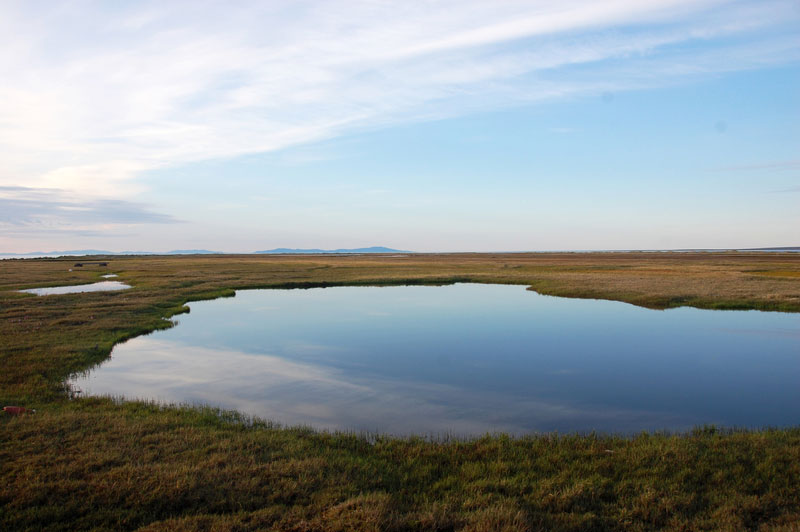
Let’s talk about trends related to lakes. In the more northern regions, there have been general increases in lakes and in lake size. In the more southern regions in warmer permafrost, there has been a general decrease in lakes and an increase in lake drainage. Permafrost is one of the key drivers of hydrology in the arctic because it basically forms an impermeable boundary beneath the ground. Much of the Arctic gets low precipitation, but it stays quite wet because you have this frozen surface reducing ground flow. When permafrost thaws and you get ground collapse or slumping, in that slump you may have a lake formation or a thaw pond. But as it continues to thaw, if you get a complete breach, it’s like pulling a plug from a swimming pool.
Earlier, you said that by the end of this century, we can expect 40-70% of surface permafrost will thaw by 2100. That is a fairly wide range…
A recent study (Chadburn et al. 2017) put it in terms of global temperature increase relative to the goals of the Paris Climate Agreement. This study showed that with a 2°C increase, we’ll lose about 40% of the permafrost. With a 1.5°C increase, we’ll lose about 25% of the permafrost. The high end of 70% is if our fossil fuel emissions proceed business as usual-if we have no reduction in fossil fuel emissions.
In terms of the global consequences, it really needs global action.
Aside from reducing fossil fuel extraction and use, what can we do to slow down the thawing of permafrost?
At the local scale, once permafrost thaws, organic matter decomposition and carbon emission is a natural, biological process so there is not a whole lot we can do. That said, because there are ecological drivers that can protect permafrost or make it more vulnerable, there are some local actions that can help. Any clear cutting or development where you remove vegetation will put the ground at risk of thaw, so preventing or limiting these types of activities can help. However, the Arctic is a vast place with limited access to most regions, so on the ground action is really not feasible in most areas of the Arctic.
But carbon is a global greenhouse gas, so action can be taken outside of the Arctic. Reducing fossil fuel emissions is number one. Reducing deforestation and forest degradation is crucial. In terms of the global consequences, it really needs global action.
What advice do you have for any of our readers who might be interested in getting involved in permafrost research?
Any undergraduates who are interested should apply to the Polaris Project, which is a project where we bring undergraduate students to the Arctic and they lead a research project related to climate change and permafrost thaw. We used to bring students to Russia, but now we work in a remote location in Alaska. Many of our Polaris Project students go on to become Arctic scientists.
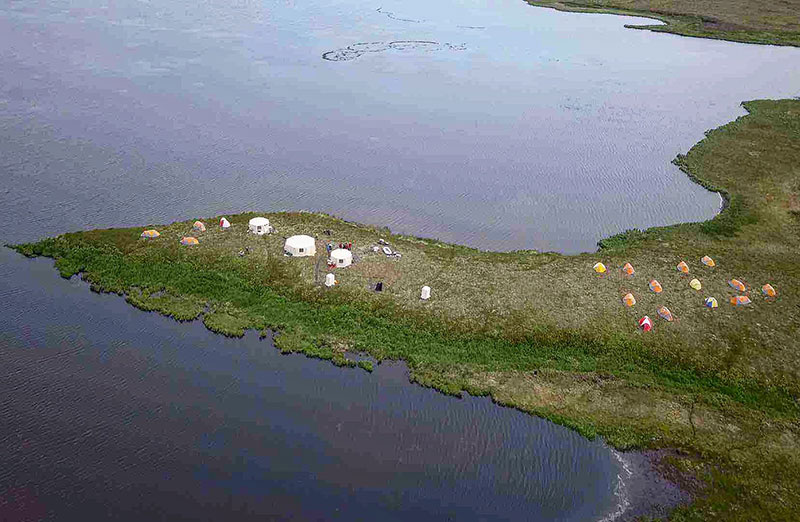
I would also encourage students to contact someone who is doing research that interests them and ask if they are hiring or if they have opportunities to get involved. I have also brought teachers to the field through a program called PolarTREC, which pairs teachers with polar scientists. I have brought high school students to the Arctic with me. Anyone in the Woods Hole area is more than welcome to volunteer with me. Seeing permafrost first-hand is the best way to understand it.
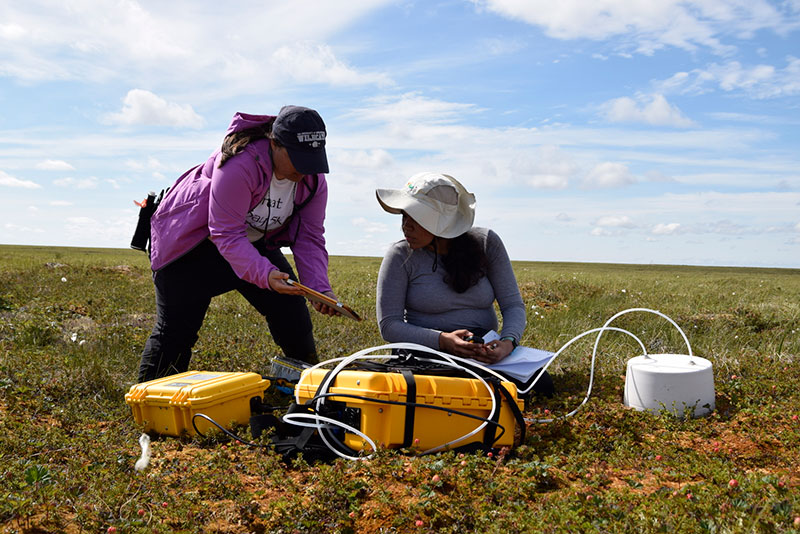
You are dealing with a fascinating but rather frightening topic. How rewarding is your work?
When I hear someone say, “I never knew about permafrost” or when a decision-maker contacts me for information and says, “I need to tell my colleagues about this,” that is extremely gratifying.
At times, though, it does get a bit challenging. To know what is coming, to see changes happening, and to listen to people who are living these changes…and then hear people continue to say “climate change isn’t happening” is extremely frustrating. But I do think that knowledge is expanding and that is rewarding.
